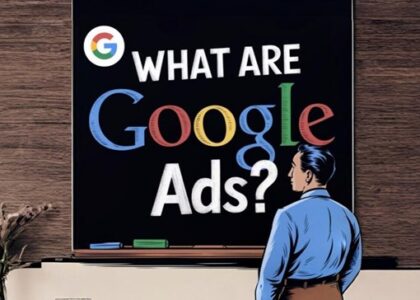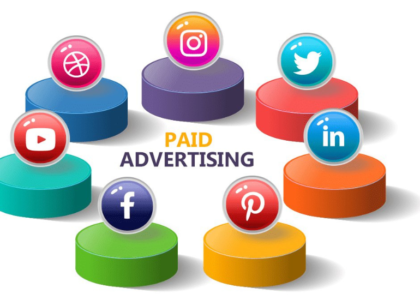Boost Your Business with Pay-Per-Click Advertising
In the fast-paced digital world, every business wants to stand out. One of the best ways to gain visibility and attract customers is through Pay-Per-Click (PPC) advertising. PPC offers businesses the opportunity to reach their target audience quickly and effectively. But how does it work, and why should you consider it? Let’s break it down in simple terms.
What is Pay-Per-Click Advertising?
With pay-per-click (PPC) advertising, marketers pay a fee each time a user clicks on their advertisement. PPC guarantees that you only pay when someone clicks on your advertisement, demonstrating interest in it, instead of spending money to be seen by everyone.
If you own a coffee shop, for instance, you could create a PPC ad that targets customers who are looking for the “best coffee near me.” You would pay a small charge when people visit your website after clicking on your advertisement. In return, your company would receive more publicity and customers.
The Benefits of Pay-Per-Click Advertising
PPC isn’t just another marketing tool; it’s a powerful way to grow your business. Here are some major benefits:
1. Cost-Effective
You only pay for actual clicks, which means your money is spent on people genuinely interested in your business. This targeted approach makes PPC a smart investment.
2. Instant Results
Unlike SEO, which can take months to show results, PPC puts your business at the top of search engine results almost immediately. It’s perfect for promotions, product launches, or seasonal sales.
3. Targeted Advertising
PPC allows you to narrow your audience based on location, age, gender, interests, and more. For example, a local bakery can target nearby customers searching for baked goods.
4. Increased Website Traffic
By appearing at the top of search results or on social media feeds, your business gets more visibility and attracts more visitors to your site.
5. Measurable Results
PPC solutions that provide comprehensive analytics include Google Ads and Facebook Ads. You can track clicks, impressions, conversions, and even how much revenue your ads generate.
6. Boosts Brand Awareness
Even if users don’t click on your ad, they see your business name. This gradually increases audience recognition and trust.

How to Create a Successful PPC Campaign
Running a PPC campaign may sound technical, but with the right approach, it’s straightforward. Here’s how you can get started:
1. Set Clear Goals
Before launching a campaign, decide what you want to achieve. Are you aiming to increase sales, drive traffic to your website, or generate leads?
2. Choose the Right Keywords
Research is key. Use tools like Google Keyword Planner to find the phrases your target audience is searching for. For example, “affordable online shoes” or “best coffee in town.”
3. Write Compelling Ads
Your ad copy should grab attention and highlight the unique value of your product or service. To entice clicks, use terms like “Shop Now” or “Limited Time Offer.”
4. Create Relevant Landing Pages
When someone clicks on your ad, they should be directed to a page that matches the ad’s promise. If your ad promotes a discount, make sure the landing page clearly shows the discounted prices.
5. Set a Budget
Decide how much you’re willing to spend daily or monthly. PPC platforms let you control your budget to avoid overspending.
6. Test and Optimize
Run multiple versions of your ads to see which performs best. Experiment with headlines, images, and keywords to improve your campaign’s effectiveness.
7. Monitor Performance
Keep an eye on metrics like click-through rates (CTR), conversion rates, and cost-per-click (CPC). Use this data to tweak your campaigns for better results.
How PPC Fits into Your Marketing Plan
PPC is most effective when used in conjunction with other digital advertising techniques. SEO prioritizes long-term visibility, but PPC offers immediate results. Combined, they produce a well-rounded strategy for drawing in and keeping clients.
For instance, PPC can be used to advertise a new product launch or blog article, while SEO helps the same content rank naturally over time. PPC creates many touchpoints for your audience and works well with social media campaigns and email marketing.
Challenges in PPC and How to Overcome Them
While PPC is highly effective, it’s not without challenges. Here are a few typical problems and solutions for them:
1. High Competition
Some industries face intense competition for keywords, driving up costs. Focus on long-tail keywords (e.g., “affordable Italian restaurants downtown”) to lower costs and target a more specific audience.
2. Ad Fatigue
When people see the same ad repeatedly, they may lose interest. Refresh your ads regularly with new visuals and messages to keep your audience engaged.
Why PPC Is Worth Your Investment
PPC is more than just placing ads online, it’s a strategy that delivers measurable results. Whether you’re a small business or a global company, PPC can help you:
- Attract potential customers quickly.
- Stand out in a crowded market.
- Gain insights into customer behavior.
- Maximize your marketing budget.
Final Thoughts
Pay-per-click is most effective when used in conjunction with other digital advertising techniques. SEO prioritizes long-term visibility, but Pay-Per-Click offers immediate results. Combined, they produce a well-rounded strategy for drawing in and keeping clients.
For instance, Pay-Per-Click can advertise a new product launch or blog article, while SEO helps the same content rank naturally over time. Pay-per-click creates many touchpoints for your audience and works well with social media campaigns and email marketing.






